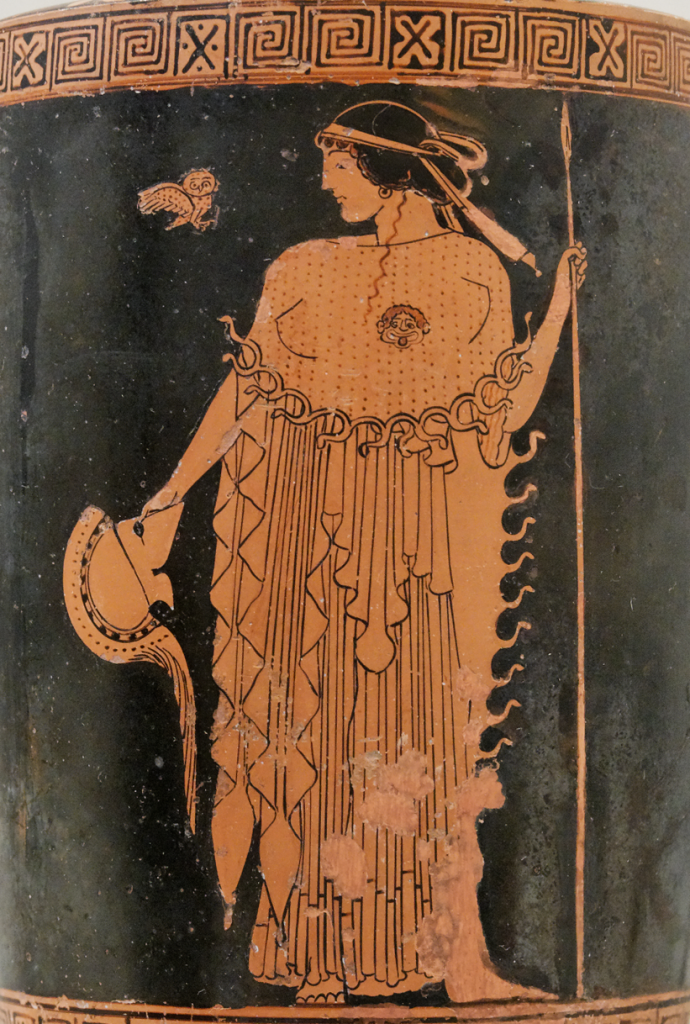Aegis
The aegis was a goat skin (the name comes from the word for goat, αἴξ/aix) that was fringed with snakes and often had the head of Medusa fixed to it. According to the Iliad (15.307-328), Hephaestus made it for Zeus and it had magical powers; when a god held it over an army on the battlefield and shook it, it would induce panic in the opposing army and cause it to flee. Although Zeus was the owner of the aegis (and Zeus is sometimes called “aegis-bearing Zeus”), he would frequently allow other gods to use it. In the Iliad passage cited above, Apollo uses the aegis to make the Greek army run away in panic. But Athena uses it most of the time (Athena is arguably Zeus’ favorite child), and Athena is usually depicted wearing it like a cloak, with Medusa’s head attached to the front and snakes writhing along the edges. The word “aegis” is used in English today. Can you explain what it means and how its current usage is connected to its mythological origin?


